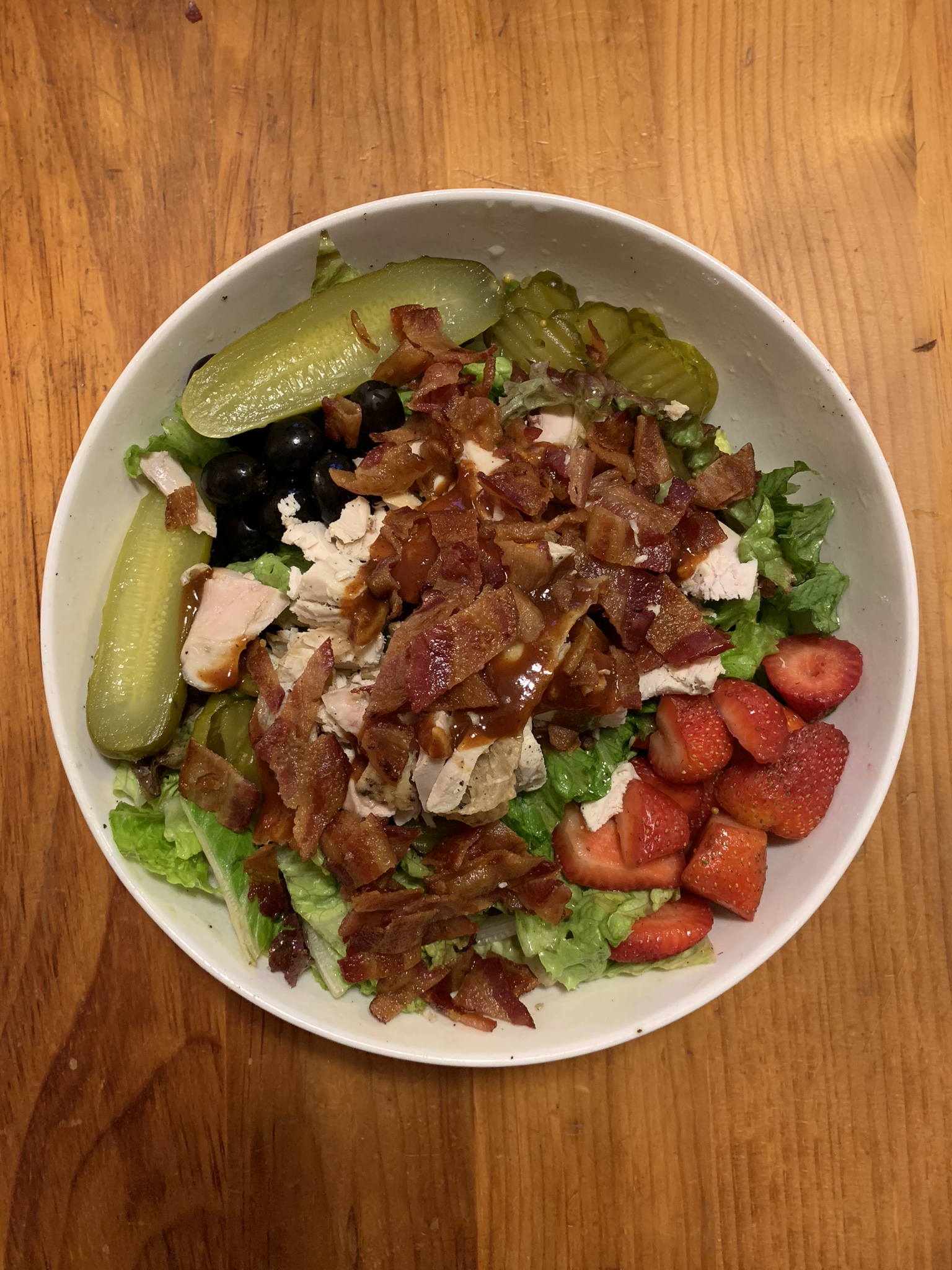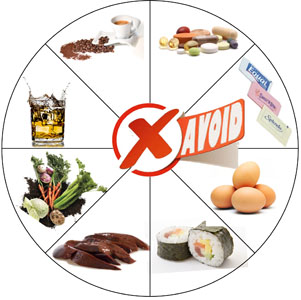
There are many things you can do to keep your diet full of nutritious and tasty foods, but there are also a lot of unhealthy healthy foods that you probably don't know about. Calories do not have to be the only thing that matters, but they can be a big help. But what is even more important are the nutritional value and the ingredients of the food. It is possible to make changes to your diet, such as replacing processed foods by whole grain alternatives. Here are some great options. You will be healthier if you eat more than one type of food.
Avoid sugary drinks and snacks. Added sugar and fat are bad for your health. Most store-bought muffins only contain cake in a muffin. Don't eat "healthy" frozen dinners. They are packed with preservatives as well as sugar. Most desserts made without fat or gluten are low in nutrients. Many so-called healthy foods are high in artificial junk. Mangos and bananas, high-GI fruits, are rich in natural fiber that is vital for our bodies.
When it comes to choosing healthy foods, choose those that contain less fat, sugar, and sugar. These nutrients are unhealthy. Avoiding these nutrients is better than overeating them. If you really want to indulge in a sweet treat, choose the healthier option. Some of the best choices are organic and free-range. If you're unsure, consult with a doctor first. It is easy to switch to a healthier lifestyle. It doesn't need to be difficult, all you have to do is a little research and effort.

Your diet should include a variety health foods. You should eat more fruits, vegetables and other healthy foods than you normally do. They are better for you over the long-term. Remember, you don’t have to eat a lot of calories to enjoy the many health benefits of eating nutritious food. There are many options to increase your intake of healthy foods without feeling hungry. Ultimately, a balance between healthy foods and unhealthy ones will help you to lose weight and stay healthy.
While most fast-food chains are trying to promote themselves as health-conscious consumers, they should not be confused by the word "healthy" on the packaging. Even "healthy" foods may contain sugar substitutes which can increase caloric intake as well as increase the risk to develop diabetes. Healthy eating habits include avoiding unhealthy foods and sticking to whole foods. There are many options to make your diet more healthy. It is as easy as making healthier choices.
Another common example of a fake healthy food is plant-based meats. They don't look like real meats. These foods can be made to look like meat and have high levels of fat and sodium. In other words, they're not really a good option for your diet. Avoiding these potentially dangerous foods is important. Instead, stick to whole, nutritionally-dense foods. It's crucial to find the right balance in your diet between healthy and unhealthy food.
You can opt for organic or raw foods if you prefer a natural choice. Some of these are low in fat and are loaded with antioxidants. They're also rich sources of vitamins C- and A. They are low in calories and therefore a good choice for those with diabetes. To get the best results, consult your doctor. These are the best foods for your health. These foods will help maintain normal blood sugar levels.

Some of the more popular types of yogurts are less healthy. Most yogurts contain high levels of sugar and flavor. There are low-fat yogurts that contain only 15 grams of sugar per portion. However, this is not a huge amount of sugar. Unsweetened milk is the only way to get low-fat milk. You can also opt for non-fat frozen yogurt instead of ice cream.
While you should avoid high-fat foods, you should not ignore the fact that they are also rich in fiber and vitamins. You should choose only those bars that are low in sugar, and those that contain at least three grams of protein. If you're looking for a healthy energy bar, look for one with minimal ingredients and less than 10 grams of sugar. This will help to reduce weight and improve your general health. It will pay off in the end!
FAQ
How much should I weight for my height and age? BMI calculator & chart
To determine how much weight loss you need, a BMI calculator is your best friend. The healthy BMI range for a healthy person is 18.5 to 24.9. If you want to lose weight, then you should aim to drop about 10 pounds per month. Enter your height in the BMI calculator.
To see if you're overweight or obese, check out this BMI chart.
How can I get enough vitamins?
The majority of your daily needs can be met through diet alone. Supplements are available if you are deficient. A multivitamin supplement can provide all the vitamins you require. You can also buy individual vitamins in your local drugstore.
Talk to your doctor to find out which foods are rich in vitamins. Dark green leafy vegetables like spinach, broccoli and kale, as well as turnip greens and mustard greens such as turnip and mustard greens and bok choy, are rich in vitamins K & E.
Ask your doctor for advice if you are unsure how much vitamin to take. He or she will recommend the appropriate dosage based on your medical history and current health status.
What should I eat?
Get lots of fruits & vegetables. These fruits and vegetables are high in vitamins, minerals, which can help you keep your immune systems strong. Vegetables and fruits are high in fiber which helps to digest and fill you up. At least five servings of fruits and vegetables should be consumed each day.
Water is essential for your body. Water flushes toxins from the body and gives you a full feeling between meals. Drink about eight glasses each day.
Eat whole grains instead of refined ones. Whole grains have all the nutrients they need, including B vitamins. Some nutrients have been removed from refined grains.
Avoid sugary beverages. Sugary drinks can be a source of empty calories, which can lead to obesity. Instead, choose water, milk, and unsweetened tea.
Avoid fast food. Fast food lacks nutritional value. Fast food may be delicious, but it will not give you the energy that you need to perform your tasks properly. Use healthier options, such as soups, sandwiches, salads, and pasta.
Limit your alcohol intake. Alcohol contains empty calories and contributes to poor nutrition. Limit yourself to no more than two alcoholic beverages a week.
Reduce your consumption of red meat. Red meats are high-in saturated fat and cholesterol. Opt for lean cuts of beef, pork, lamb, chicken, fish, and turkey instead.
How to measure body weight?
The best way to measure body fat is with a Body Fat Analyzer. These devices are used to measure body fat for people who want weight loss.
Why does our weight change with age
How do you determine if your bodyweight is changing?
Weight loss occurs when there is less fat than muscle mass. This means that daily energy needs must be greater than the calories consumed. The most common cause of weight loss is decreased activity levels. Other causes include illness, stress, pregnancy, hormonal imbalances, certain medications, and poor eating habits. If there is more body fat than muscle mass, then weight gain can occur. It occurs when people consume more calories per day than they need. Overeating, increased physical activity and hormonal changes are all common reasons.
The main reason why our bodies lose weight is because we consume fewer calories than we burn. The main reason we lose weight is because we exercise more often. This increases our metabolism rate and burns more calories each day. This does not necessarily mean that we will get thinner. What is more important is whether or not our body is losing or gaining weight. Weight loss is possible if you burn more calories than you consume. But, if we consume far more calories than what we burn, then we actually store them as fat.
As we age, our ability to move around is slower and we are less mobile. We also tend to consume less food than when we were younger. Also, we are more likely to gain weight. We also tend to look larger because we have more muscle.
Without weighing yourself each week, there is no way to know how much weight you have lost. There are many ways you can measure your weight. You can gauge your waist size, hips, hips, thighs and arms. Some prefer to use the bathroom scales, others prefer to use tape measures.
If you want to track your progress, you should try weighing yourself once a week and measuring your waistline once a month. You can also take pictures of yourself every few months to see how far you've come.
You can also find out how much you weigh by looking up your height and weight online. If you're tall at 5'10", and weigh 180lbs, your weight would be 180.
Statistics
- According to the 2020 Dietary Guidelines for Americans, a balanced diet high in fruits and vegetables, lean protein, low-fat dairy and whole grains is needed for optimal energy. (mayoclinichealthsystem.org)
- This article received 11 testimonials and 86% of readers who voted found it helpful, earning it our reader-approved status. (wikihow.com)
- Extra virgin olive oil may benefit heart health, as people who consume it have a lower risk for dying from heart attacks and strokes according to some evidence (57Trusted Source (healthline.com)
- The Dietary Guidelines for Americans recommend keeping added sugar intake below 10% of your daily calorie intake, while the World Health Organization recommends slashing added sugars to 5% or less of your daily calories for optimal health (59Trusted (healthline.com)
External Links
How To
What does the meaning of "vitamin?"
Vitamins are organic compounds found naturally in food. Vitamins aid us in absorbing nutrients from the food we eat. The body cannot make vitamins; therefore, they must be obtained from food.
There are two types: water-soluble and fat-soluble vitamins. Water soluble vitamins dissolve easily in water. Some examples include vitamin C,B1 and B2 vitamins (thiamine), B2 and riboflavin, B3 and B6 vitamins (niacin), folic acids, biotin, pantothenic acids, and cholesterol. Fat soluble vitamins are stored in the liver and fatty tissue. Vitamin D, E, K and A are some examples.
Vitamins can be classified by their biological activity. There are eight major categories of vitamins.
-
A - Vital for normal growth and maintaining good health.
-
C – essential for proper nerve function.
-
D - Vital for healthy bones and teeth
-
E - needed for good vision and reproduction.
-
K - Essential for healthy muscles and nerves.
-
P - Vital for strong bones and teeth.
-
Q – aids digestion of iron and iron absorption
-
R - Red blood cells are made from red blood cells.
The recommended daily intake (RDA), of vitamins varies with age, gender and physical condition. RDA values are set by the U.S. Food and Drug Administration (FDA).
For adults aged 19 and older, the RDA for vitamin B is 400 micrograms daily. Pregnant women require 600 micrograms daily to support fetal development. Children ages 1-8 require 900 micrograms per day. Infants under one year of age require 700 micrograms per day, but this amount decreases to 500 micrograms per day between 9 months and 12 months of age.
Children ages 1-18years who are obese need 800 micrograms per day while those who are overweight need 1000 micrograms per day and children who are underweight need 1200 micrograms per day to meet their nutritional needs.
Children aged 4-8 years old who have been diagnosed as having anemia require 2200 micrograms of vitamin C per day.
2000 micrograms per person is necessary for general health. Women who are pregnant or breastfeeding need 3000 micrograms per day due to increased nutrient requirements.
Adults over 70 need 1500 micrograms daily, as they lose 10% of their muscle every ten years.
Women who are pregnant and lactating need more nutrients than the RDA. Pregnant women need 4000 micrograms per dayduring pregnancy and 2500 micrograms per day after delivery. Breastfeeding moms need 5000 micrograms each day when breastmilk production occurs.